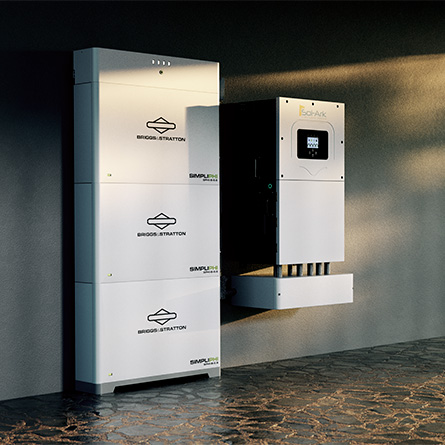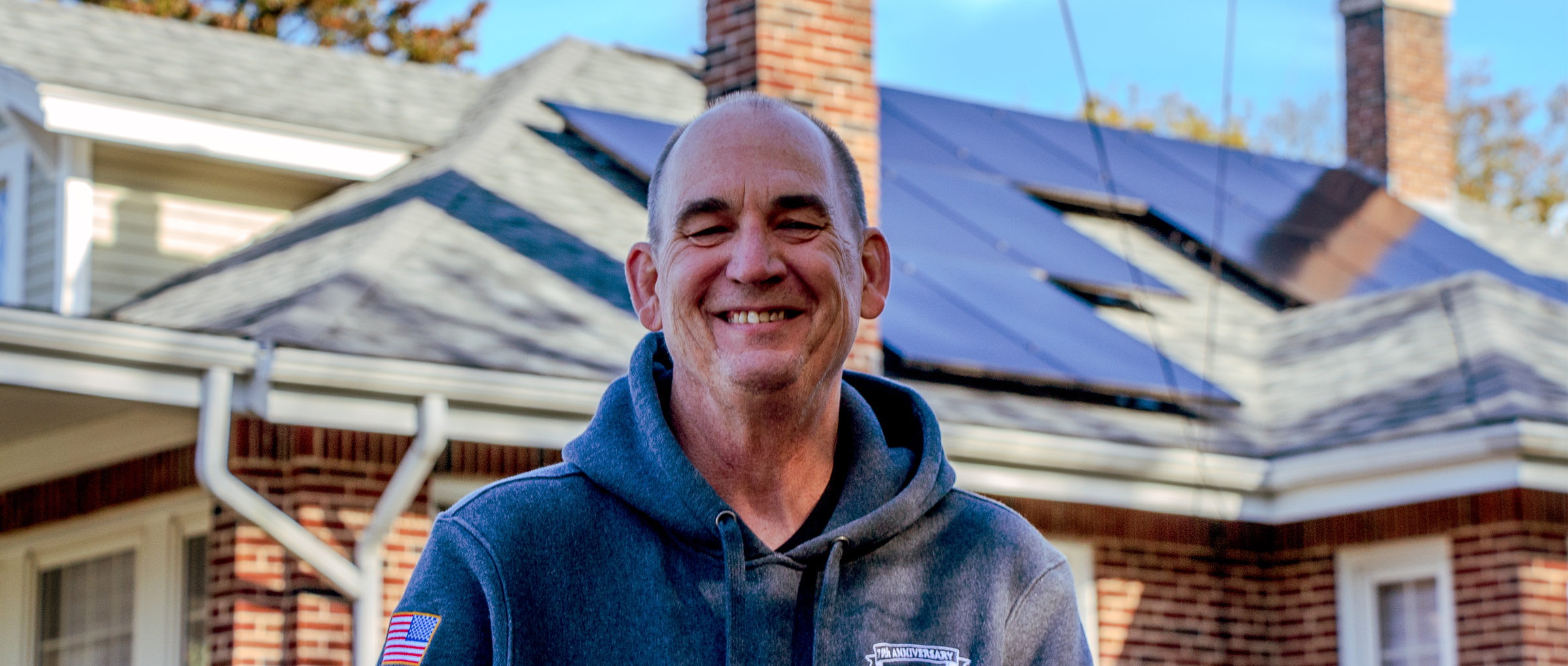Paul Hadfield has had a 29-panel solar system since June 2020 and felt it was time to add battery storage. He’s on his second EV and, since he does a lot of driving for his business, he charges his EV almost every day. Despite heavy usage, Paul hasn’t had an electric bill in three years and gets credit toward any future bills each month from his utility company, Eversource Power.


“I originally considered batteries when I had solar installed, but I waited a while, and now they have even better systems. I have friends who live out West, and they have blackouts and brownouts. I didn’t want to be without power and heat during the winter, and I didn’t want the food in my fridge to go bad.”
Hadfield
Paul worked with Greg Aborn, president of Plymouth Solar Energy, and purchased a six-battery Briggs & Stratton Energy Solutions system. His installation, which can power his entire house for five days without sun, is AC coupled to his SolarEdge system and uses AccESS with PHI 3.8-M batteries and a Sol-Ark 10K inverter for 22.8 kWh of capacity.


“Paul is a very technical guy who likes to review the specs and data. He’s someone I could talk to all day about solar and battery storage. We configured a specific system so he could charge his EV at a reduced rate to ensure the load size wouldn’t fault out his system.”
Aborn
The Briggs & Stratton batteries use Lithium Ferro Phosphate (LFP) cylindrical chemistry and run cooler, meaning they’re safer, more reliable and have a longer lifespan with 10,000 cycles at 80% DoD (depth of discharge). The batteries can easily be scaled to increase capacity to 358.5 kWh and they provide integrated solutions that are compatible with other brands. They can also replace lead-acid batteries and are AC or DC coupled for flexibility in off-grid applications.
“I got the large system because of my EV. I also run four air conditioner units during the summer because I don’t have central air. Even if we briefly lose power, the battery system kicks in within seconds.”
Hadfield
Paul decided to purchase his battery installation instead of leasing it and was able to utilize the Inflation Reduction Act to claim 30% of the cost of the installation on his 2022 federal taxes.

Ready to experience true energy independence?
Request a consultation with a Briggs & Stratton dealer or installer near you by clicking the button below.



